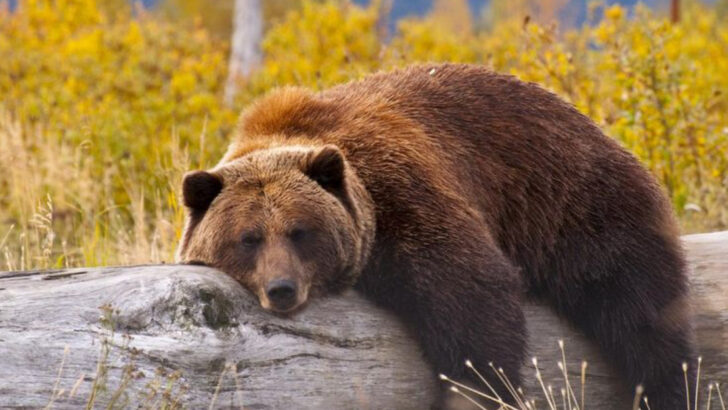Some bears don’t just roam the wild—they own it.
These are the giants. The tank-sized titans of the forest and tundra. Brown bears so massive, so jaw-droppingly huge, they blur the line between legend and reality.
We’re talking claws longer than your fingers, shoulders like boulders, and enough raw power to flip a car. These aren’t your average grizzlies—these are the 15 biggest brown bears ever recorded in North America.
Each one comes with its own jaw-dropping tale. Some were spotted deep in the Alaskan wilderness. Others were measured by stunned hunters or researchers who could hardly believe what they were seeing.
If you thought you knew big bears, think again. These beasts make even the boldest predators look small.
Kodiak Bear – The Gentle Giant
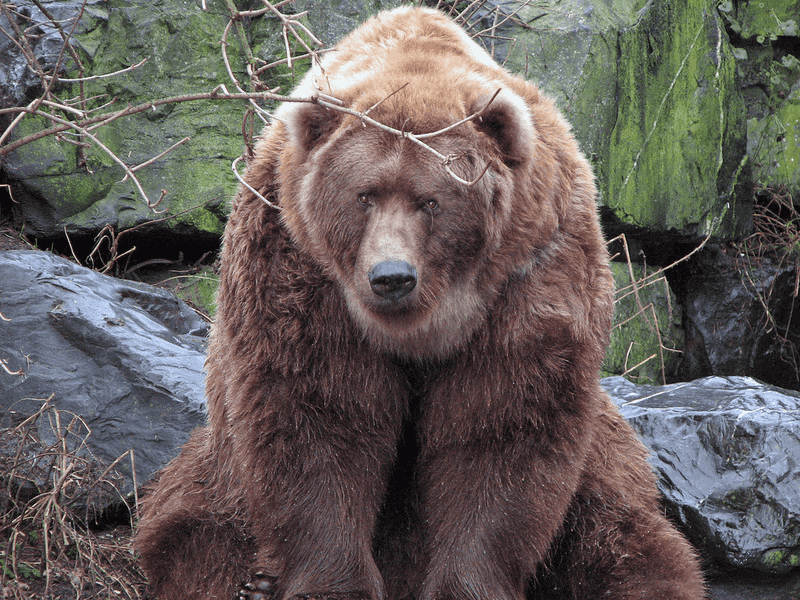
Standing as a towering symbol of the Alaskan wilderness, the Kodiak bear is one of the largest subspecies of brown bear. Known for its formidable size, this bear can weigh up to 1,500 pounds. Its presence on Kodiak Island is a spectacle of nature’s grandeur.
Kodiak bears boast a thick fur coat that varies from golden to dark brown, adapting well to the island’s climate. Their diet includes salmon, berries, and other vegetation, supporting their massive frames.
Despite their size, these bears are often shy and avoid human interaction, showcasing the gentle side of their giant nature.
Coastal Alaskan Brown Bear – The Salmon King

Imagine a bear with a passion for salmon that matches its enormous size. The Coastal Alaskan brown bear, often weighing over 1,200 pounds, thrives along Alaska’s coastlines. These bears are expert fishermen, their diet rich in fish, especially during the salmon run.
Their prowess in fishing is unmatched, with some bears catching multiple fish in a single swipe. Their fur, a mix of brown and golden hues, glistens under the Alaskan sun as they hunt.
While their size can be intimidating, these bears are a testament to the rich biodiversity of the region.
Grizzly Bear of Yellowstone – The Iconic Predator
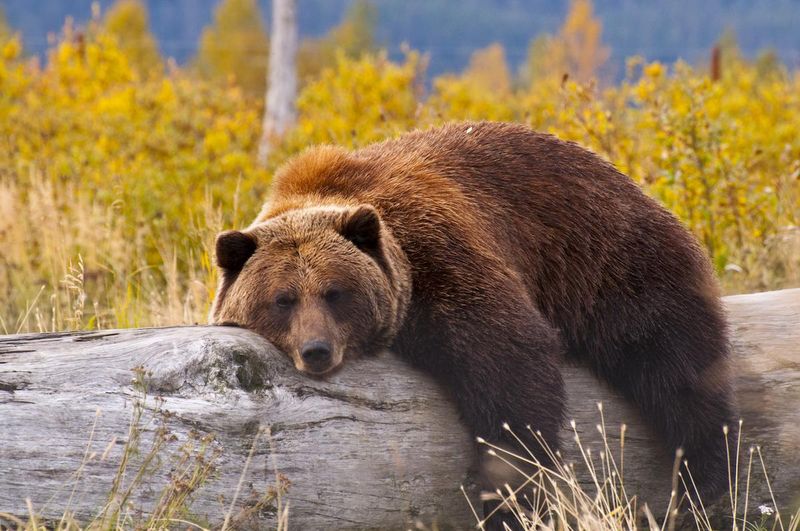
Roaming the expansive landscapes of Yellowstone National Park, the grizzly bear stands as a true icon of North American wilderness. Weighing up to 1,000 pounds, these bears are formidable predators and scavengers.
Yellowstone’s grizzlies are known for their distinct hump on the back, a muscle used for digging and foraging. Their diet includes a variety of plants and animals, showing their adaptability.
These bears have a significant role in the ecosystem, influencing the population dynamics of prey species. Their presence is a vital part of Yellowstone’s natural heritage.
Alaskan Peninsula Brown Bear – The Coastal Titan
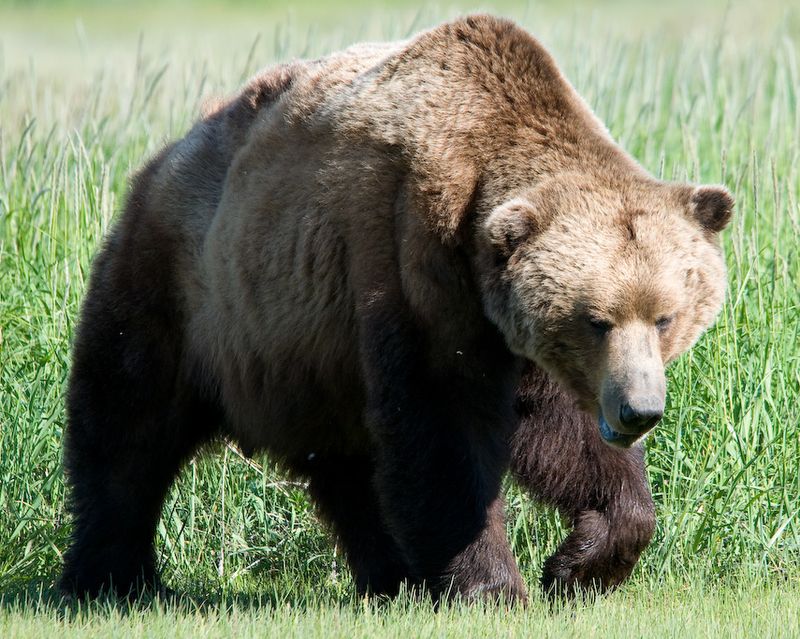
The Alaskan Peninsula brown bear is one of the largest land carnivores, with an impressive presence along the peninsula’s rugged coasts. Weighing up to 1,300 pounds, they are true titans of the wild.
Known for their hunting skills, these bears feed on a diet rich in fish and marine resources. Their thick, coarse fur provides insulation against cold coastal winds.
With a territory that spans across diverse landscapes, the Alaskan Peninsula brown bear is an emblem of strength and survival in harsh environments.
Katmai National Park Bear – The River King
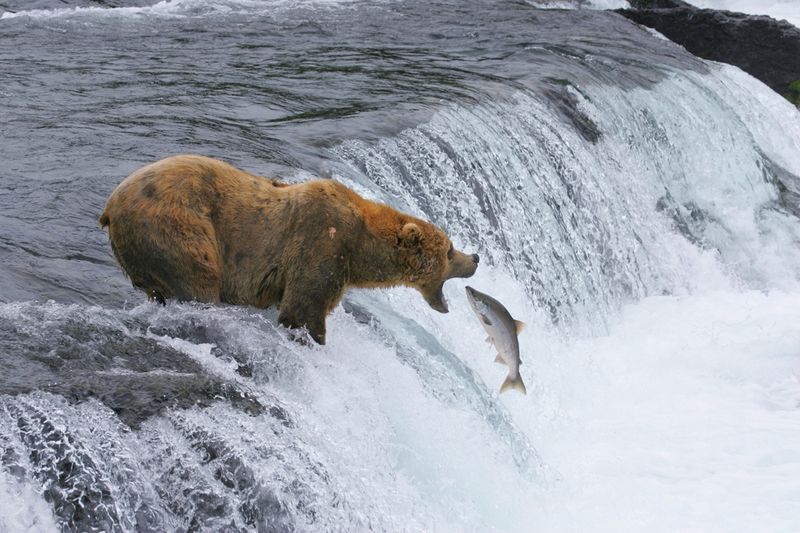
In the heart of Katmai National Park, the bears that roam near Brooks Falls are renowned for their size and fishing skills. These bears, often exceeding 1,200 pounds, dominate the rivers during the salmon season.
Katmai bears are a popular sight among tourists, drawn to their impressive fishing abilities. Their fur is often a lighter shade of brown, blending with the park’s scenic views.
Watching these bears in action offers a glimpse into the raw power and grace of these magnificent creatures, a true natural wonder within the park.
Kluane Grizzly – The Yukon Titan

The Kluane Grizzly, with its commanding presence, dominates the rugged terrains of Yukon’s Kluane National Park. This bear is not only known for its massive size but also for its extraordinary climbing ability.
Scaling steep cliffs and navigating dense forests, the Kluane Grizzly is a true mountaineer of the bear world. In the heart of the Yukon, this bear finds refuge amidst the pristine wilderness.
Its powerful build is matched only by its keen intelligence, making it both a formidable hunter and a cautious guardian of its territory. The Kluane Grizzly represents the untamed beauty and wild spirit of the Canadian north.
Yakutat Grizzly – The Coastal Colossus

Standing on the shores of Yakutat Bay, this grizzly is more than just a bear – it’s a coastal legend. Known for its sheer size and strength, the Yakutat Grizzly thrives in the rich, salmon-filled waters of Alaska.
Its robust physique and powerful limbs make it a master fisherman, capable of catching the swiftest of fish with ease. While its culinary skills are impressive, it’s the bear’s ability to traverse the rugged terrain of the Alsek River that truly sets it apart.
Many travelers have been left in awe, witnessing its agility amidst the challenging landscapes. The Yakutat Grizzly is a symbol of resilience and adaptability, embodying the indomitable spirit of the Alaskan wilderness.
Chinitna Bay Bear – The Coastal Forager
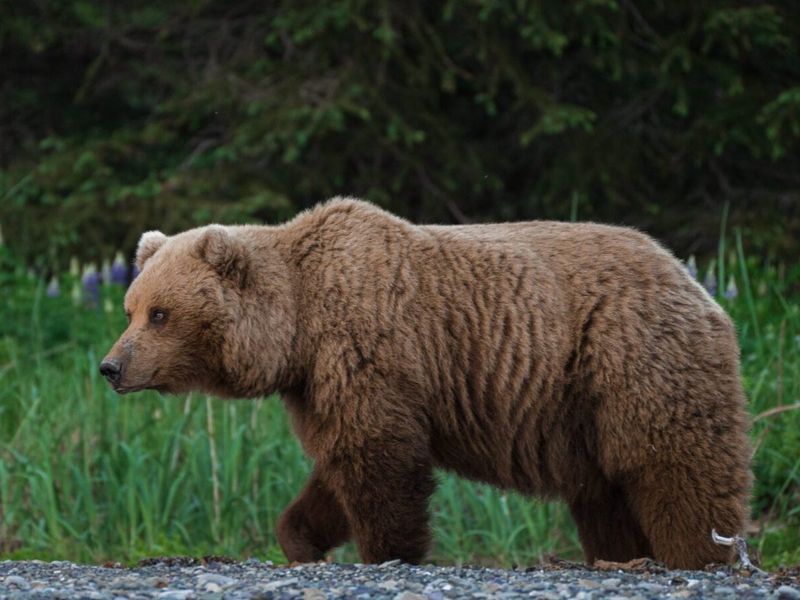
In Lake Clark National Park, along the coastal edges of Chinitna Bay, bears thrive as expert foragers. Weighing up to 1,200 pounds, these bears have adapted to the unique tidal ecosystem.
Their diet consists of clams, sedge grass, and fish, showcasing a diverse palate. The lush environment of the bay provides nourishment and a picturesque backdrop for these majestic creatures.
Observers often find them digging for clams or resting by the water, a testament to their resourcefulness and the bountiful nature of their habitat.
Admiralty Island Bear – The Fortress Giant
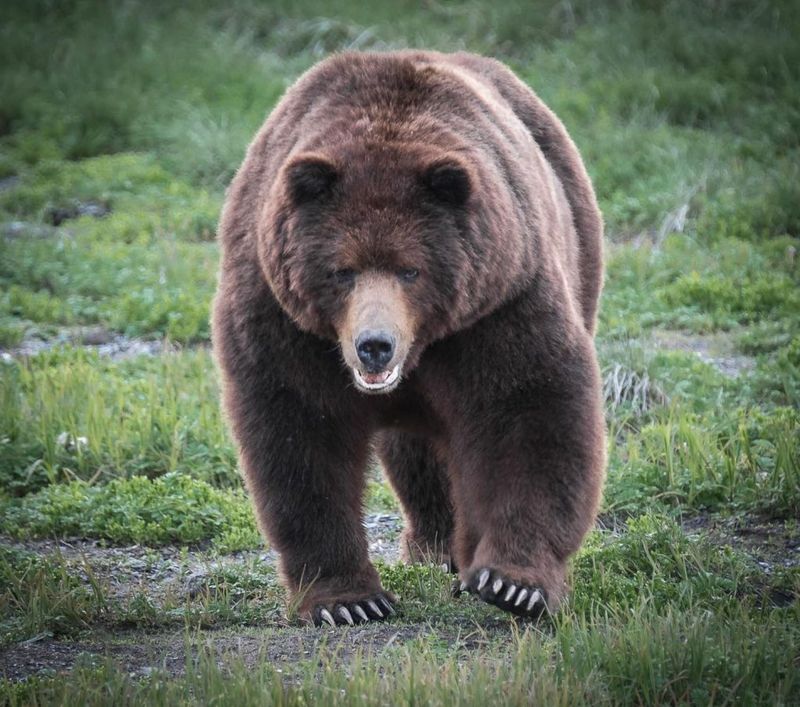
Admiralty Island, also known as the “Fortress of the Bears,” is home to one of the highest densities of brown bears in the world. Bears here can weigh over 1,400 pounds, thriving in the island’s lush rainforests.
These bears are expert fishers, with their diet predominantly consisting of salmon. The dense forest provides shelter and a rich hunting ground.
Their presence on the island is a reminder of the pristine and untamed wilderness, offering a unique opportunity to witness these giants in their natural environment.
Denali Brown Bear – The Mountain Wanderer
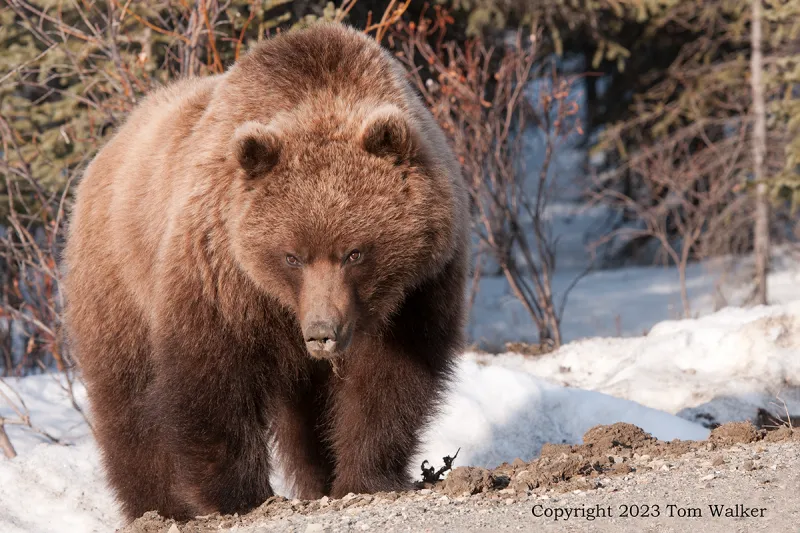
In the breathtaking expanses of Denali National Park, the brown bear roams freely, a true wanderer of the mountains. Weighing up to 1,000 pounds, these bears embody the spirit of the Alaskan wilderness.
Denali bears are versatile in their diet, consuming everything from berries to small mammals. The park’s diverse landscapes offer a rich habitat, from alpine meadows to rugged cliffs.
Their solitary nature and remarkable adaptability make them a fascinating subject for wildlife enthusiasts exploring the park’s vast and scenic trails.
Togiak Bear – The Salmon Raider
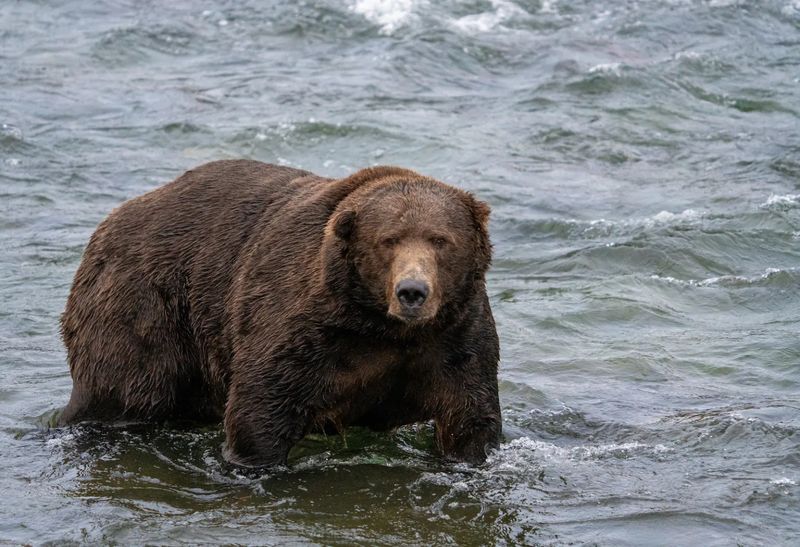
The Togiak bear, found in Togiak National Wildlife Refuge, is known for its impressive size and salmon raiding skills. These bears, weighing over 1,100 pounds, are a vital part of the refuge’s ecosystem.
Their fishing expeditions are a sight to behold, as they swiftly capture salmon from the river’s currents. The refuge’s diverse environment supports a rich diet and allows these bears to thrive.
Their presence is a key indicator of the health of the ecosystem, showcasing the intricate balance of nature in this remote Alaskan refuge.
Kenai Fjords Bear – The Glacier Guardian

In the icy realms of Kenai Fjords National Park, the brown bears are true guardians of the glaciers. Weighing up to 1,200 pounds, these bears have adapted to the cold, coastal environment.
Their territory includes breathtaking glaciers and dense forests where they forage for food. Their thick coats provide insulation against the frigid climate.
Observing these bears amidst the park’s majestic glaciers offers a unique glimpse into the resilience and beauty of wildlife that thrives in the harshest conditions.
Lake Clark Bear – The Quiet Observer
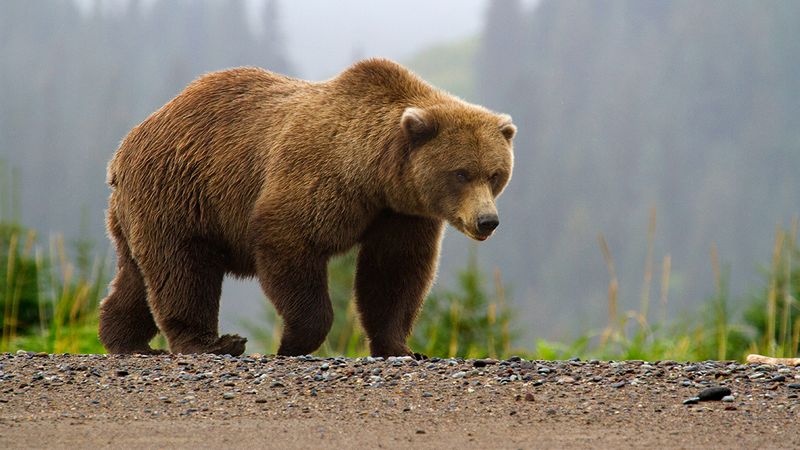
The quiet and majestic Lake Clark bears are known for their observant nature, often seen watching the world around them. Weighing up to 1,200 pounds, these bears inhabit the stunning landscapes of Lake Clark National Park.
Their diet is diverse, ranging from fish to berries, supported by the park’s rich biodiversity. These bears are solitary, often found wandering the park’s serene trails.
Their presence adds to the tranquil beauty of Lake Clark, offering visitors a chance to see these gentle giants in a pristine and peaceful setting.
McNeil River Bear – The River Monarch
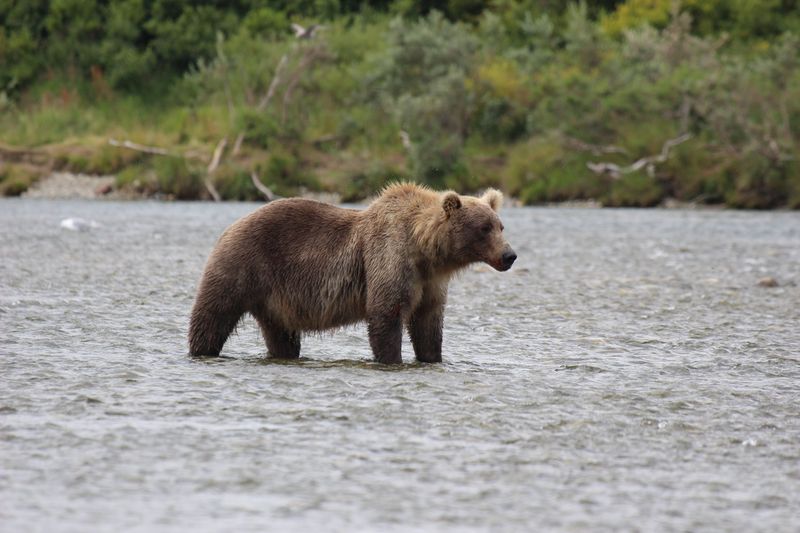
At McNeil River State Game Sanctuary, bears reign supreme as the river monarchs. Weighing up to 1,400 pounds, these bears are known for their dominance over the river’s resources.
Their fishing skills are legendary, with bears gathering in large numbers to feast on the abundant salmon. This sanctuary provides a safe haven for bears, allowing them to thrive.
Observing these bears in their natural habitat offers a profound understanding of their role in the ecosystem and the sanctuary’s importance in preserving them.
Great Smoky Mountains Bear – The Forest Titan

In the heart of the Great Smoky Mountains, a brown bear known as the Forest Titan roams majestically. This bear, with its colossal frame, is a testament to the thriving ecosystem of the region. Known for its elusive nature, spotting this bear is a rare but unforgettable experience.
Its diet relies heavily on the abundant flora and fauna of the Smokies, showcasing its adaptability in diverse terrains. The bear’s thick fur and powerful limbs make it well-suited for the rugged landscape it calls home.
Did you know? The Great Smoky Mountains National Park is one of the most biodiverse regions in North America, offering a perfect habitat for such magnificent creatures.

